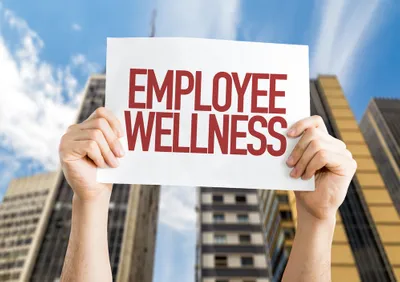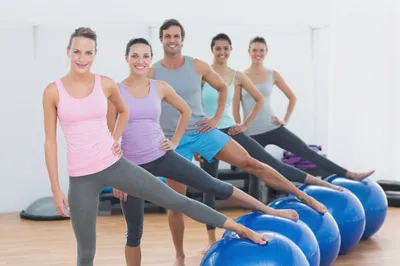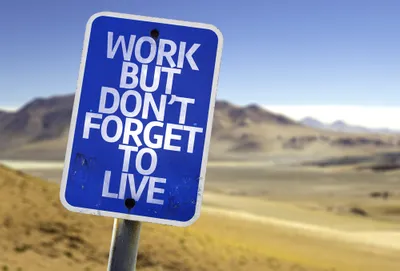Many businesses and corporations are jumping on board the health promotion band wagon by offering their employees gym memberships, active breaks, and lunch and learn opportunities. The fact is, a healthy employee is a productive employee. Unfortunately, many programs fail at drawing in the expected excitement, appreciation, and employee participation leaving this great initiative dead in the water. While preaching to the converted is easy, getting buy in, from those employees who would rather poke their eye out with a pencil than join a yoga class, is a daunting (and otherwise impossible) task.
So how does an excited health promoter spread the word of wellness without scaring off the rest of the office?
1. Don’t Be a Cheerleader for Health
There are two types of people in the world. One type (“Type A”) thrives on getting up at the crack of dawn to join other “Type As” in a group exercise before the rest of the world hits the alarm. While the other type (“the rest of us”) would rather get a root canal. Let’s face it, health promoters are cheerleaders for health and while this is great when motivating a fitness class, it is less than ideal when trying to generate motivation among the disinterested.
The key to promoting wellness in the workplace is being aware that not all employees share our passion for fitness, veggies, and yoga pants. Many people would rather go to the neighbourhood pub with friends for lunch (and skip the spandex and veggie sticks). So how do we make our wellness program attractive to everyone? Getting to know our staff (and what interests and motivates them) is the first step coupled with a healthy respect for individual differences.
2. Do Get the Facts
With all the misinformation about health, fitness, and nutrition out there, it is important to gather our resources from a reliable source. Posting information from the trending fitness magazine may not be the best source for the facts on well-being.
For example, programs that use scare tactics such as “obesity is bad for health” are misinformed and doing more harm than good. Research is clear that a focus on healthy behaviors such as eating more vegetables and getting more physical activity will be better received and evidence based.
3. Don’t Forget the Fun!
It is understood that when people are having fun, they are also learning and have a higher rate of adherence to the activity. By adding humor to our wellness programs we may entice those who would otherwise be going home for lunch. If our wellness programs include hiring speakers for a lunch and learn presentation, find speakers that add humour (and possibly fun) to their talks.
In addition, be creative in planning physical activity sessions when possible. Incorporating themed classes (i.e. a Halloween Howler) or classes that include a little friendly competition (i.e. friendly inter departmental challenges). If we make it fun…they will come (and participate).
4. Do Be Inclusive
All too often workplace wellness programs offer classes for those already active or have a “healthy” range of motion and mobility. For example, yoga classes (unless speciality oriented) do not take into account the limited range of motion people of size or those with disabilities. It is important to consider as many limitations and differences as possible so we may offer an inclusive program.
Another consideration may be the times the program is offered. Are there shift workers in the organization that will miss out? What about people who cannot attend after work due to child care? A good workplace wellness program is an inclusive program.
5. Don’t Overlook Human Behavior
The good news is we have built an inclusive, fun, facts-based wellness program. The bad news is no one is coming to it. This is the number one frustration of most wellness programmers. It is important to understand the psychology of behavior (if just a little bit) to understand this phenomenon.
According to Prochaska, Norcross, and DeClemente’s book, Changing for Good, they suggest that only 20-percent of our target population will participate…the rest are either not thinking, starting to think, or preparing to join their workplace wellness program. So how do we cater to the underserved 80-percent? It may be as simple as providing informational handouts and posters that are entertaining and educational. It could mean making time for questions and support should an employee need a little coaxing or is still unsure.
6. Do Remember the Rewards
Believe it or not, some of the simples of rewards are the most impactful when motivating adults to participate in wellness programs. There is no need for the big ticket items and cash prizes, just a few gold stars and a chart of participants. While money may motivate employees to change behavior in the short term, it doesn’t promise long term changes.
Consider creating a currency for healthy behaviors employees can exchange for small perks. For example, each “random act of healthiness” a participant may receive a gold star to stick next to her name. Rack up a certain amount of stars and trade it in for (insert reward here). It could be leaving an hour early on a Friday to enjoying an extra “jeans day”. Star systems are not just for children…adults love them too.
7. Don’t Define Health in Two Dimensions
One of the most important considerations when preparing for a workplace wellness program is the model of “wellness” or “health” we chose. Some define wellness as mind, body, and spirit while others define health as eating well and exercise. Dr. Michael O’Donnell, the founder and Editor in Chief of American Journal of Health Promotion, has suggested a five factor model.
From physical, social, and spiritual, to emotional and intellectual health, all factors are of equal importance and have demonstrated similar findings in the health research. The key is including as many of these factors as possible into an employee wellness program. If social health is all about connecting with others (and helps to reduce stress, blood pressure, and strengthen the immune system), organize a team building event to build group cohesion and a sense of community at work.
8. Do Market Creatively
Let’s face it; it is hard to make health promotion sexy when compared to popular junk foods or burger commercials. How does a fruit and veggie campaign compete with fast food advertising? The key to marketing is to couple fun, funny, and informative in the most entertaining way possible.
Use color and, if possible, humorous pictures pulling from popular culture and things that relate to the largest audience possible. A factual poster with a negative connotation (i.e. many quit smoking posters) do not have the same effect as does one that makes us laugh. As we all know, it is the funny commercials on TV that we remember the most.
9. Don’t Be a “Biggest Loser”
The research is clear that 95-percent of weight losers will regain the weight back over the following five to ten years. In addition, we now understand that a focus on weight loss alone isn’t as successful at weight loss as a focus on healthy behaviors.
Fat loss competitions not only place the focus on fat loss but they promote quick weight loss due to the nature of the competition. In addition, approximately 1/3 of participants will be inclined to take the dieting and exercise to extreme levels leading to eating and exercise disorders. Any employee wellness program that is sincere about improving workplace health will not succumb to the “biggest loser” siren song.
10. Do Avoid Judgement
Some of the most judgemental people are doctors, nutritionists, personal trainers, and health promoters (no judgement). Health promotion articles, research, and those that spread the word are riddled with the language of “good” and “bad”. When we feel judged by our behaviors we are less apt to change. Instead we feel shame, guilt, and even depression that may lead to more of the same behaviors (i.e. emotional eating).
Ultimately, we all have the right to choose what we eat and how we live and some of us may chose the opposite of what others determine as “good for us”. Who is to say that person is “bad”, “good”, or “unhealthy”? There are so many factors that determine health that eating junk food and sitting on the couch will not have such extreme effects if one is socially, intellectually, emotionally, and spiritually well.
11. Don’t Overlook the Small Successes
As a society we celebrate those successes reserved only for the elite athletes. We are impressed by record breaking performances when we should be equally impressed by someone lacing up their running shoes for the first time. It takes a lot of courage to take the first step to change it is important to acknowledge the power of a pat on the back.
If employees feel their efforts are being noticed, they are more apt to continue. This includes the person who has just completed a walk around the block or walking up the stairs for the first time. Their efforts, subjectively, could be equal to the efforts of a long distance athlete and our support may be what they need to push through the discomfort and add exercise to their life.














